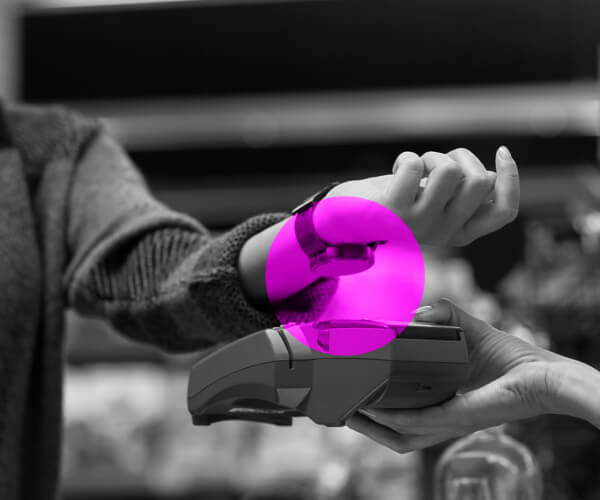As experts in managing brand visual assets in packaging across many verticals, including consumer technology, we know that what works in a Best Buy or any retail environment does not always translate to the eCommerce grid. This impacts how consumers do their research and make their eventual choice as well as the challenges it poses to the eCommerce marketing manager.
When we launched Flash.PDP™, our AI-powered eCommerce image evaluation tool in 2020, we did a deep dive into the pain points in digital retail that impact those shopper marketers tasked with managing brand visual assets on the digital shelf. If anything, the complexity of this environment has only gotten worse.
The retailers make all the rules, with each one having their own nuances. Fall into non-compliance, and you risk de-listing, often with little transparency in the nature of your transgression.
Your SKU may be the best seller for one hour and then it changes the next hour, which also impacts your position on the category page, and we know that the higher your position: the higher your sales. This is true even in the consumer tech category where we know consumers do more research and visit more websites than other categories.
Product details are managed at the SKU level, where much of the information required to populate each PDP (product detail page) with explicit rules regarding text. Digital product managers field hundreds of alerts daily about noncompliant content with little to measure and fix ineffective visual content.
How do consumers find what they want to buy in eCommerce?
On the consumer side, the signposts and clues online are as confusing to those shoppers, who are used to physical retail, and now must learn new ways to navigate the eCommerce grid:
- Category landing pages change constantly and dynamically. The order in which product images appear can be random based on the objectives of the retailer (including favoring listings chosen by other shoppers or to reward heavy investors in their retail media promotions, etc.).
- There are no brand blocks, and in many cases the product is the image rather than branded packaging, so visual cues like colors associated with a specific brand don’t help steer consumers to recognized brands.
- Shopping on mobile devices represents 61% of digital retail traffic, which translates to consumers spending even less time because they are often on the go. The thumbnail is literally too small, especially on mobile devices, to display differentiating details that might break through as persuasive on the pack on a physical shelf or having a product display with point-of-sale materials to help direct consumers to the right product for them.
- In the tech category in particular, eCommerce activity doesn’t stop when they are away from home and when shopping in-store, electronics buyers are more likely to research information, look up online prices, check online reviews, and look for additional product information.
- Shoppers may scroll right past your product on the landing page without seeing it or utilizing filters which deselect your product, resulting in no purchase.
- Once on the product page itself, consumers will often default to what they see rather than what they read. This can have a negative impact if your brand’s visual assets are not operating optimally.
Why do images matter so much?
Based on research conducted at MIT, we know that it only takes the brain 13 milliseconds to process an entire image, often filling in the missing pieces, unconsciously aiding recognition. It takes the brain a much greater cognitive load to process language, and humans are terrible at processing large numbers. The brain is far better equipped to compare than to count so talking about speed or processing power is often meaningless to consumers. Our brains interpret visuals much more intuitively than text, and think in terms of markers, such as ‘bigger’ or ‘faster’, than precise values. Imagery and intuitively simple information therefore heavily inform shopper choices on the digital shelf.
Once at the individual Product Detail Page (PDP) for the specific SKU or variable chosen, the shopper expects to see up to six product images to help inform their choice. But these images need to be highly effective relative to the key criteria they convey to positively impact choice. Ensuring your PDP images are effective enough to drive eCommerce conversion can be fiendishly hard. You need to understand the principles within your product category for what makes images effective with the right claims and the tools to evaluate them at the speed necessary for digital image management decision-making, at scale.
Key Principles for visual asset optimization for digital commerce
Through the combination of AI and computer vision technology applied to the Behaviorally database including thousands of eCommerce images, Behaviorally has created Flash.PDP™, a solution that fills the need for eCommerce image optimization evaluation that is predictive of image effectiveness and the recommendations necessary for improvements.
Through the development and application of our tools to hundreds of test cases, we have identified three key things to keep in mind to optimize brand visuals that can drive sales.
1. High Contrast = High Visibility. Contrast is key especially when designing eCommerce hero images. There are e-retailers rules and guidelines that you must follow. For example, on Amazon, you must show either the pack or product as it is (with some minor tweaks). That said, there is always opportunity to increase contrast and pop on the digital shelf.
Showing the product on an angle to increase the contrast versus the background can help. However, be careful not to show boxes with too many elements on side panels causing a cluttered looking image.
On lifestyle and benefit images, color contrast can be used to highlight the key areas that suggest a specific benefit. Our research shows time after time that images using contrast to highlight critical image elements perform better overall.
2. Reduce Cognitive Effort. Behavioral science tells us that our System 1 instinctive brain processes decisions intuitively, almost at an unconscious level. Especially in cases where shoppers engaging with mobile commerce are spending seconds rather than minutes making a transaction choice, limiting the cognitive load (most often characterized as System 2 thinking) ensures the optimal path to purchase.
Take the case of the Mobile Ready Hero Image (MRHI): those that are optimized are both easier to comprehend and more appealing. They make it easier to determine what best satisfies your buying criteria. Not all retailers allow MRHI (Amazon as an example), so it’s important to design with your key retailers in mind, and it’s essential to know how much leeway exists in simplifying product or pack shots.
When presenting benefit images, be careful about the amount of text included, recognizing the cognitive load needed to process text or numbers versus pure visuals. If you need to include text or numbers, do so in a way that’s intuitive and makes it easy for the viewer.
3. Connect Emotionally. As we know eCommerce shoppers are similarly motivated by how they feel. To connect with them, choose images that are visceral and evocative. Use real photography versus illustrations, and make sure there is an intuitive context. Use imagery depicting human interaction with the product or in an everyday context, either in use or in the consumers’ hands, which can additionally indicate size and weight.
At Behaviorally, we understand the challenge of managing large amounts of digital images to ensure that they meet all the principles covered above. Through our eCommerce optimization tool, Flash.PDP™, we continue to build on the expertise and knowledge base around what makes pack images and brand visuals most effective at driving conversion in online retail. When eCommerce images are optimized to the metrics we have developed, they can contribute optimally to help our clients achieve the most important moment in marketing: the consumer choice leading to a purchase transaction.
Contact us with your consumer technology questions for eCommerce or the physical shelf today!
THE AUTHOR

Simon Wyld is the Senior Vice President out of Behaviorally’s Los Angeles hub working with the Customer Success team. Simon has a strong passion for designing and implementing behavioral science-based market research solutions with a strong focus on the tech sector. Originally from England, he now lives in LA with his wife, twin kids, and pup. On weekends, you can catch Simon golfing!
